
-
Find the right food for your petTake this quiz to see which food may be the best for your furry friend.Find the right food for your petTake this quiz to see which food may be the best for your furry friend.Featured products
 Hill's Science Diet Adult Oral Care Chicken, Brown Rice & Barley Recipe Dog Food
Hill's Science Diet Adult Oral Care Chicken, Brown Rice & Barley Recipe Dog FoodClinically proven kibble technology to reduce plaque & tartar build-up
Shop Now Adult 7+ Small & Mini Chicken & Brown Rice Recipe Dog Food
Adult 7+ Small & Mini Chicken & Brown Rice Recipe Dog FoodFor the unique nutritional needs of mature Small & Mini dogs
Shop Now Adult Small & Mini Lamb Meal & Brown Rice Recipe Dog Food
Adult Small & Mini Lamb Meal & Brown Rice Recipe Dog FoodFor the faster metabolism of Small & Mini dogs
Shop NowFeatured products Adult Urinary Hairball Control Chicken & Rice Recipe Cat Food
Adult Urinary Hairball Control Chicken & Rice Recipe Cat FoodActively supports the health of the whole urinary system
Shop Now Adult Indoor Chicken Recipe Cat Food
Adult Indoor Chicken Recipe Cat FoodSupports energy level and beautiful fur in indoor cats
Shop Now Hill's Science Diet Adult Sensitive Stomach & Skin Dog Food
Hill's Science Diet Adult Sensitive Stomach & Skin Dog FoodHighly digestible recipe, gentle on stomachs. Nourishes skin & promotes a lustrous coat
Shop Now -
Featured articles
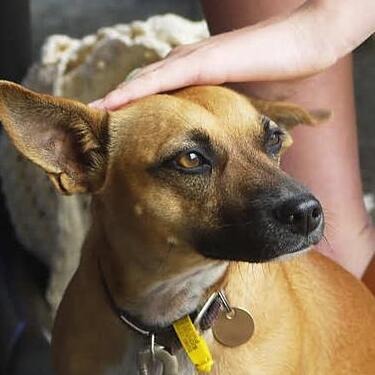 15 Pet-Friendly Cities Ideal for a US Road Trip
15 Pet-Friendly Cities Ideal for a US Road TripCheck out our list of pet-friendly U.S. cities that are excellent travel options, offering off-leash dog parks and pet-friendly restaurants & hotels.
Read More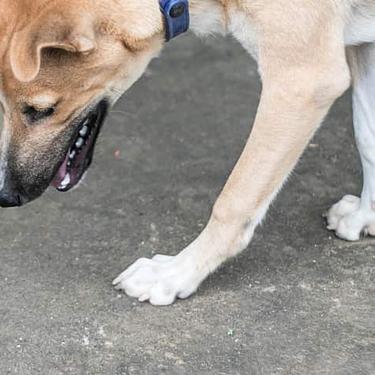 My Pet Ate a Lizard — What Should I Do?
My Pet Ate a Lizard — What Should I Do?Learn what to do if your pet eats a lizard, including whether they can be toxic and symptoms to keep an eye on when they've swallowed one.
Read More Easy DIY Dog & Cat Toys: Nine of Our Favorites
Easy DIY Dog & Cat Toys: Nine of Our FavoritesBrowse this comprehensive guide for several of our favorite DIY dog and cat toys that are sure to put a little pep in your pet's step.
Read More -


You may know that diabetic alert dogs are service dogs, but just what is it that they do to help their owners? How can they detect when their handlers are having a diabetic episode? After intensive training, diabetic service dogs help to notify their humans as to any changes in blood sugar level. Here is the story of two dogs — how they found their forever family, and what, specifically, they do to help their handler.
Michelle Hyman and SaveHer
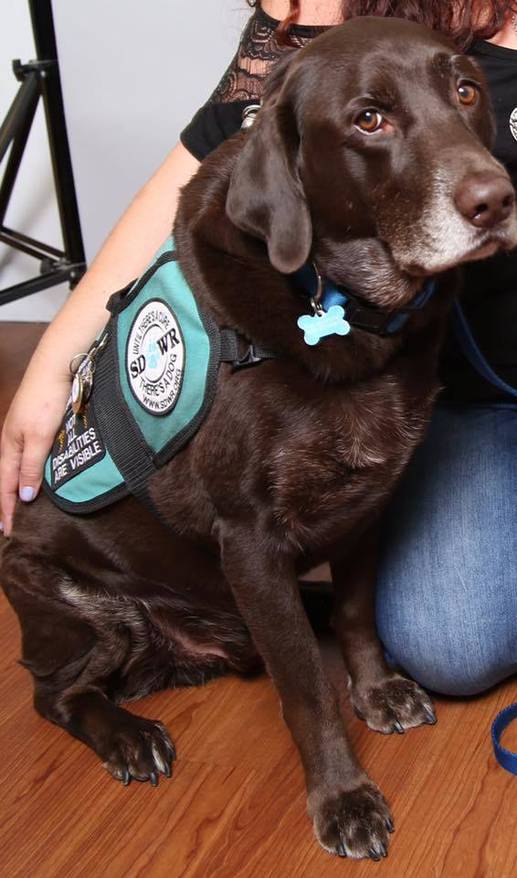
When Michelle searched the internet for diabetic alert dogs in the hopes that she could adopt one into her home, she researched every training company carefully before making a decision. "The organization I received my diabetic alert dog from is Service Dogs by Warren Retrievers," she says. "I found them by researching many organizations on the internet and thorough[ly] asking questions when I called them. They were the only company that came to me for everything which included delivery of the service the dog and ongoing in-home personalized training."
However, before her service dog could be delivered to her, she needed to go through intense training. "All Service Dogs by Warren Retrievers puppies go through countless hours of training prior to being placed with a recipient. They are paired with volunteers for nine to eighteen months that work alongside of the training of staff prior to being placed in their forever homes," says Michelle H. "The organization works directly with its volunteers over this time attending training sessions monthly and they do constant evaluations throughout the process."
The training doesn't stop there. Diabetic service dogs need to train with their new handler so that both the human and animal are aware of commands and lifestyle needs. Michelle H. says, "The best part of Service Dogs by Warren Retrievers is the training was fully personalized and custom tailored to me. When they delivered my diabetic alert dog to me, the trainer spent five days with me. They provided ongoing in-home training for eighteen months with each subsequent visit every 90 to 120 days for the duration of two to four days. I was able to contact my trainer anytime I had questions and they were so helpful."
So, what does aptly named SaveHer do to help Michelle? "My diabetic alert dog alerts to my blood sugars multiple times a day and during the night when I am sleeping," she says.
But how does SaveHer detect when Michelle H. is having a diabetic episode? "My dog can smell when my blood sugar is low or high. He gives trained alerts and natural alerts. His trained alert is when my blood sugar is high or low he walks up to me and paws my leg. Then I ask him 'What is it?' Then he gives me another paw if my blood sugar is high and a nose touch to my leg if it's low. A natural alert he does is he whines when my blood sugar is out of range, for instance, in the car when he can't paw my leg."
SaveHer and Michelle H.'s training and bond have built a relationship that is saving her life. "It takes a lot of commitment, dedication and hard work to have a successful diabetic alert dog," she says. "The dog comes trained, but it's up to you to enforce what he has already been trained. The dog is only as good as what you put into them. There is nothing like having a beautiful service dog helping you with a hard disease like diabetes."


Tasty Tips
Rue and the Krampitz Family
Rue is another dog trained by Warren Retrievers, who now lives in his forever home with Katie and her parents Michelle and Edward Krampitz. "When Rue came to us, she was seven months old and had already received some public access training to ensure good behavior in public," says mom, Michelle K. "In addition, we had periodic visits from trainers, who would reinforce learned behaviors and introduce new ones for us to work on."
Like SaveHer, Rue underwent special training to ensure that she could meet the needs of her diabetic handler, and in Rue's case, to also communicate with other members of the family, so they too can help take care of Katie, too. "Rue had also received scent training to alert for diabetic highs and lows," says Michelle K. "Diabetics give off a [sickly]-sweet smell when their blood-sugar is high. When low, the scent is acidic. A dog's sense of smell is several thousand times greater than ours. Our daughter Katie's safe blood-glucose range is 80 to 150. Rue will alert to any highs or lows outside of that range. Even if other people are unable to notice it, Rue associates Katie's scent with a 'high' or 'low.'"
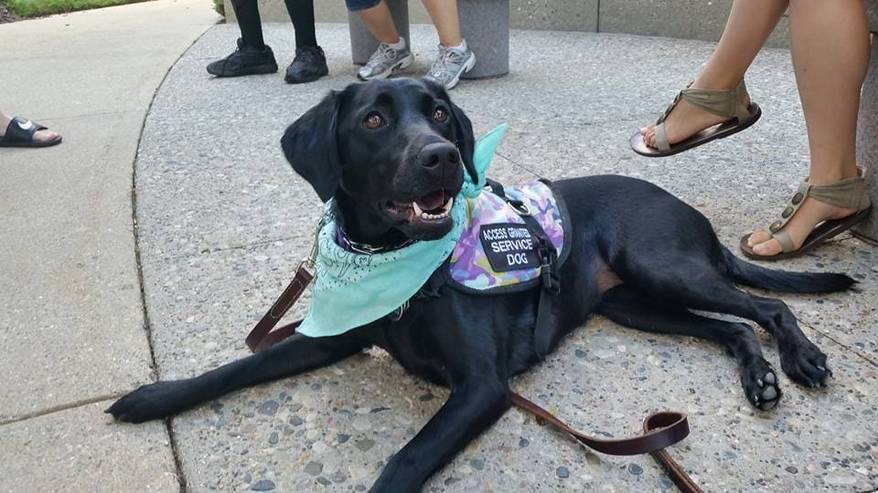
Rue's training is similar to SaveHer's in that the dog uses her nose and paws to alert the family that Katie's blood sugar is out of range. Michelle K. says, "For all alerts she will 'paw' us and then when asked if Katie is high or low, she will either paw again for a high or nudge with her nose for a low. Rue is always monitoring Katie's blood sugar, alerting numerous times a day. This has allowed Katie to keep tighter control of her blood sugar, which has improved her overall health."
It's important to understand that changes in environment or activity can influence a person's blood sugar levels. Michelle K. says, "Physical exercise, sports, illness, and other factors can often lead to extreme fluctuations in blood sugar."
Diabetic alert dogs are always working, even when it's time to rest. "Rue has alerted Katie early in the morning, after detecting a dangerously low blood-glucose level that could have resulted in loss of consciousness, coma, or worse," says Michelle K. "Rue often alerts Katie to dangerous highs, as well. High blood-glucose levels can do unseen damage to internal organs, contributing to organ failure later in life. Responding quickly to Rue's alert and correcting the high helps to ensure long-term health for Katie."
Because service dogs are always working, they need space in public to do their jobs. Michelle K. says, "It's important to understand that you do not have to be physically disabled to benefit from a service dog. Type 1 diabetes is one of several 'hidden' diseases, for which service dogs are providing assistance. And while Rue is adorable, she is working. It is never appropriate to pet or attempt to gain a service dog's attention, without first asking the handler's permission. Rue wears a special vest, with patches, that indicate she is a diabetic alert service dog and also asks that she not be pet."
If you, or someone you know, is diabetic and looking for a diabetic alert dog, consider both SaveHer and Rue's stories. With proper training and a close bond, they both have a dramatic impact on the health and lives of their parents.


Erin Ollila believes in the power of words and how a message can inform—and even transform—its intended audience. Her writing can be found all over the internet and in print, and includes interviews, ghostwriting, blog posts, and creative nonfiction. Erin is a geek for SEO and all things social media. She graduated from Fairfield University with an M.F.A. in Creative Writing. Reach out to her on Twitter @ReinventingErin or learn more about her at http://erinollila.com.
Related products

For the unique nutritional needs of mature Small & Mini dogs

Improves everyday ability to get up & go

For the faster metabolism of Small & Mini dogs

Clinically proven kibble technology to reduce plaque & tartar build-up
Related articles
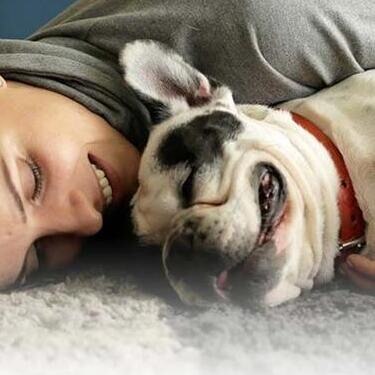
Your dog's coat and skin are a big part of your dog's overall health. Ensure you keep your dog's coat healthy, by following these simple tips.

Learn basic steps & precautions for treating a cut on your dog, including what you can put on the cut, and when you should take them to the vet.

Discover how the field of dog science is giving us more and more insights into the inner workings of our furry best friends.
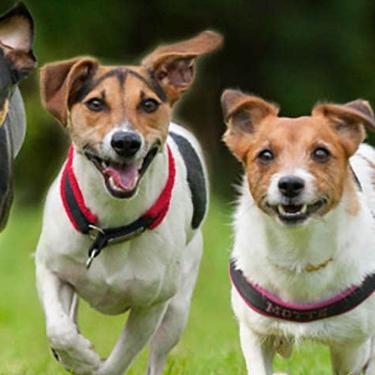
Understand the role that Omega-6 and Omega-3 fatty acids play in your dog's overall health, and how you can ensure they are getting enough.
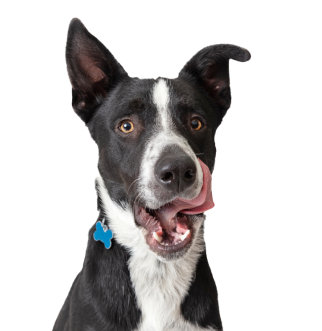
Put your dog on a diet without them knowing
Our low calorie formula helps you control your dog's weight. It's packed with high-quality protein for building lean muscles, and made with purposeful ingredients for a flavorful, nutritious meal. Clinically proven antioxidants, Vitamin C+E, help promote a healthy immune system.
Put your dog on a diet without them knowing
Our low calorie formula helps you control your dog's weight. It's packed with high-quality protein for building lean muscles, and made with purposeful ingredients for a flavorful, nutritious meal. Clinically proven antioxidants, Vitamin C+E, help promote a healthy immune system.

